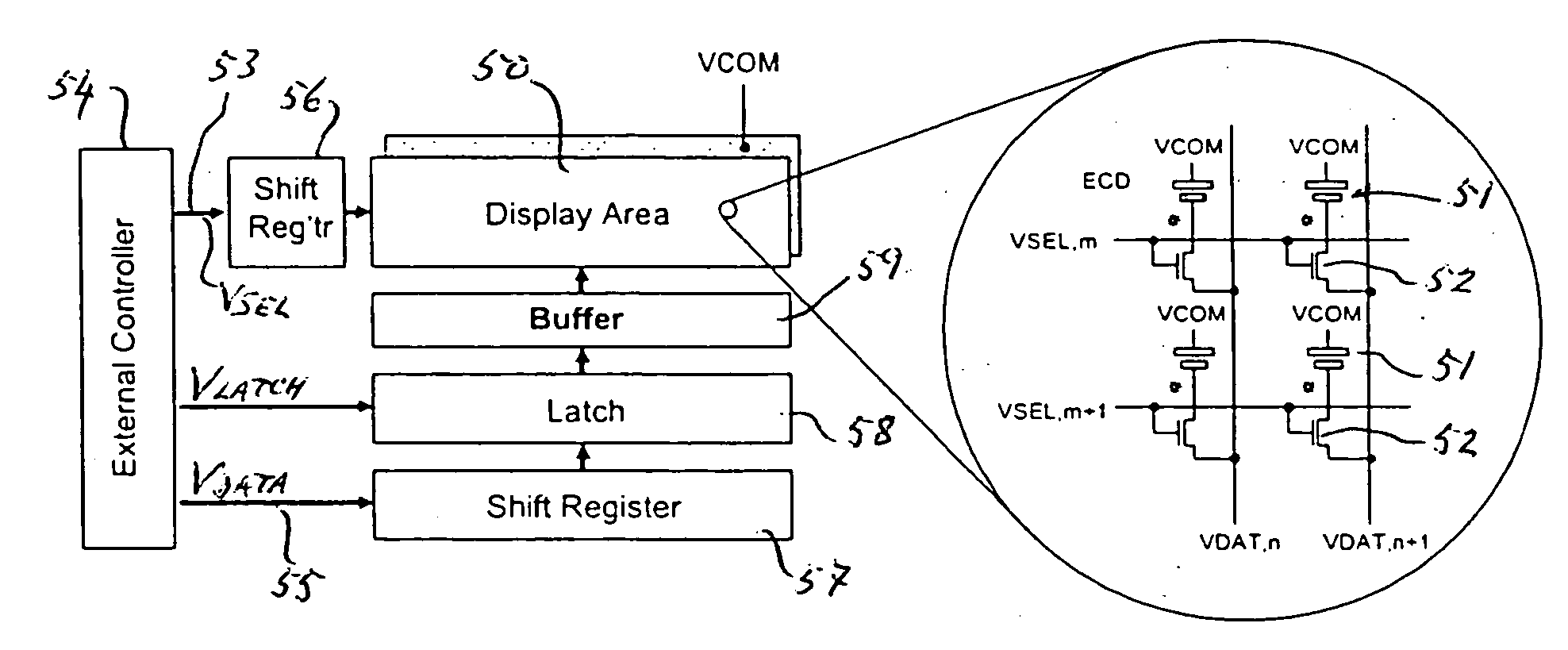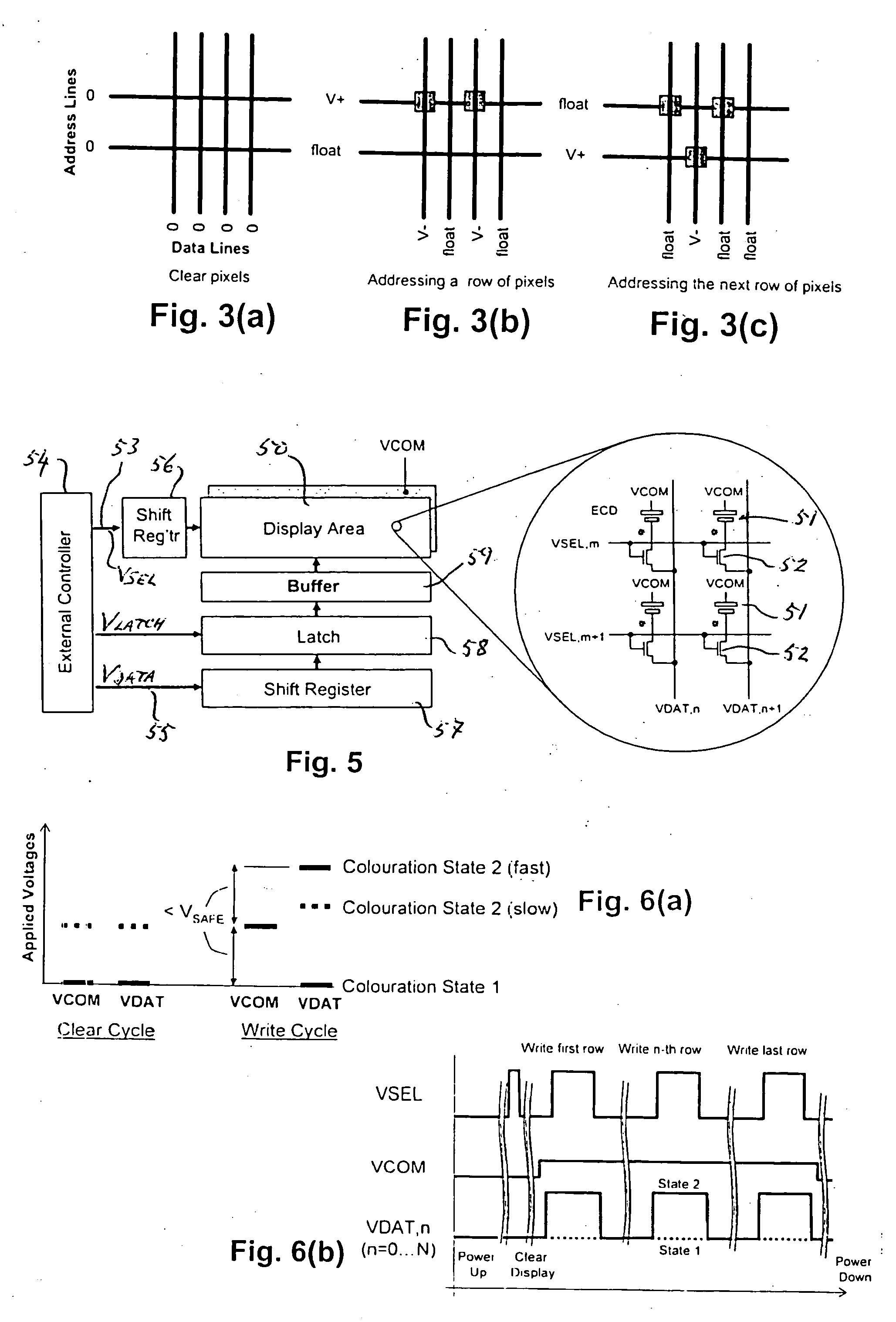Electro-optical arrangement
a technology of optical arrangement and optical arrangement, applied in the direction of instruments, static indicating devices, etc., can solve the problems of slow color change, electric current is needed to maintain the colored state, and it is difficult to obtain strong color change or bright colors, etc., to achieve the effect of saving tim
- Summary
- Abstract
- Description
- Claims
- Application Information
AI Technical Summary
Benefits of technology
Problems solved by technology
Method used
Image
Examples
Embodiment Construction
[0041] An embodiment of an electro-optical arrangement in accordance with the invention is shown in FIG. 5. In FIG. 5 the display area 50 comprises an active-matrix electrochromic display driving scheme using low-temperature polysilicon thin-film transistor technology (LTPS-TFT).
[0042] The electrochromic pixel elements 51 are connected such that all working electrodes are connected to individual select transistors 52. The working electrodes are shown by the shorter rectangular box, which indicates negative polarity. These electrodes are responsible for the coloration that occurs when the pixel elements are driven into their light-modulated, as opposed to cleared (transparent), state.
[0043] The display area 50 is driven by line-select signals (Vsel) 53 provided by an external controller 54 and by data signals (Vdata) 55 likewise provided by the external controller 54. The line-select signals (Vsel) and data signals (Vdata) are fed into respective shift registers 56, 57 and the para...
PUM
 Login to View More
Login to View More Abstract
Description
Claims
Application Information
 Login to View More
Login to View More - R&D
- Intellectual Property
- Life Sciences
- Materials
- Tech Scout
- Unparalleled Data Quality
- Higher Quality Content
- 60% Fewer Hallucinations
Browse by: Latest US Patents, China's latest patents, Technical Efficacy Thesaurus, Application Domain, Technology Topic, Popular Technical Reports.
© 2025 PatSnap. All rights reserved.Legal|Privacy policy|Modern Slavery Act Transparency Statement|Sitemap|About US| Contact US: help@patsnap.com



